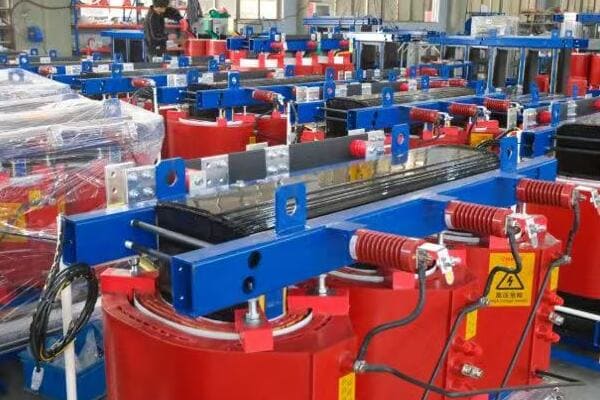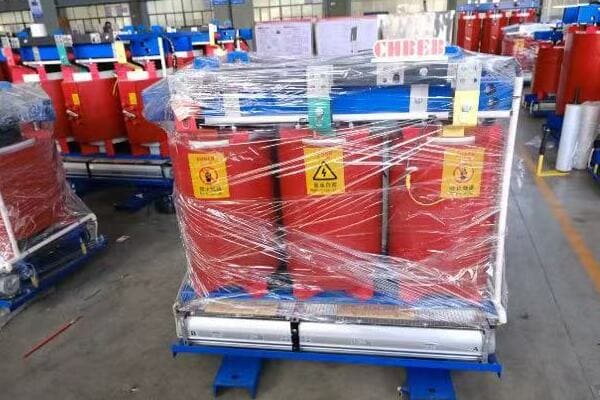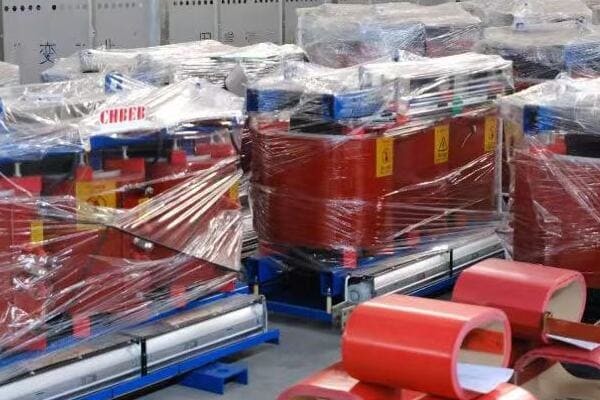3 Phase Distribution Transformer Selection Guide: Match Voltage, Capacity & Cooling Type?
Are you struggling to choose the right 3 phase distribution transformer for your project? You’re not alone. Many engineers and project managers find themselves overwhelmed by the technical specifications and diverse options available. But what if you had a clear, step-by-step guide to ensure you select the perfect transformer for your specific needs?
To select the right 3-phase distribution transformer, match your system voltage, load kVA requirements, and cooling type (AN, AF, or oil-immersed). This guide helps engineers and buyers choose the optimal transformer for industrial, commercial, or utility projects with minimal energy loss and maximum reliability.
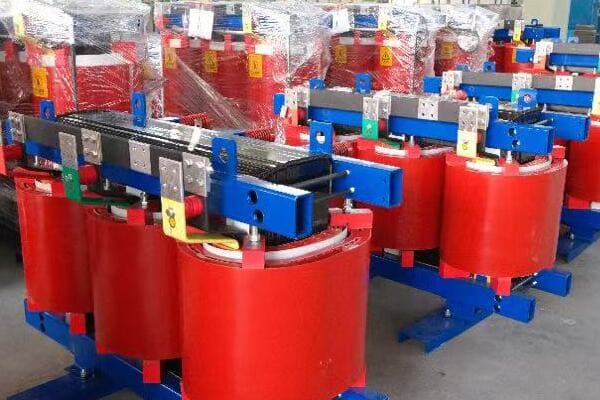
In this comprehensive guide, I’ll walk you through the essential steps to select the ideal 3 phase distribution transformer for your project. Whether you’re working on an industrial facility, a commercial building, or a utility-scale installation, this article will provide you with the knowledge to make an informed decision that balances performance, efficiency, and cost.
What Is a 3 Phase Distribution Transformer?
Have you ever wondered how electricity from power plants is transformed into usable power for buildings and industries? This is where 3 phase distribution transformers come into play. But what exactly are they, and why are they so crucial in our power systems?
A 3 phase distribution transformer is an electrical device that converts high-voltage electricity from power stations into lower voltage suitable for end-user consumption. It handles three alternating currents, phase-shifted by 120 degrees, providing more efficient power transmission and distribution for larger loads in industrial, commercial, and residential applications.
Understanding 3 Phase Distribution Transformers
Let’s break down the key aspects of these transformers:
- Basic Structure and Components
- Function in Power Distribution
- Advantages of 3 Phase Systems
Basic Structure and Components
A 3 phase distribution transformer typically consists of:
- Three sets of primary and secondary windings
- A magnetic core (usually made of silicon steel)
- Insulation materials (oil or dry-type)
- Cooling system (natural air, forced air, or oil)
I remember my first encounter with a 3 phase transformer during an industrial plant upgrade. The complexity of its internal structure was fascinating, especially how the three phases were intricately wound around the core.
Function in Power Distribution
These transformers play a crucial role in power systems:
- Step down high voltage from transmission lines to usable levels
- Maintain phase relationships between primary and secondary sides
- Provide isolation between high voltage and low voltage systems
During a recent project for a shopping mall, the 3 phase transformer was the key component in efficiently distributing power across various loads, from HVAC systems to lighting circuits.
Advantages of 3 Phase Systems
3 phase transformers offer several benefits over single-phase systems:
- More efficient power transmission
- Better suited for large, balanced loads
- Smoother power delivery with less pulsation
- Ideal for industrial motors and heavy equipment
Here’s a quick comparison table:
| Aspect | 3 Phase Transformer | Single Phase Transformer |
|---|---|---|
| Power Capacity | Higher for same size | Lower for same size |
| Efficiency | Generally higher | Lower for large loads |
| Application | Industrial, commercial | Residential, small commercial |
| Load Balancing | Better | Limited |
Understanding these basics is crucial for proper transformer selection. In my experience, a clear grasp of what a 3 phase distribution transformer is and how it functions forms the foundation for making informed decisions in the selection process.
As we move forward to discuss why choosing the right transformer matters, keep in mind that these devices are not just components in a power system – they are critical links that ensure efficient, reliable, and safe power distribution in our modern world.
Why Choosing the Right Transformer Matters?
Have you ever considered the long-term implications of selecting the wrong transformer for your project? Many professionals underestimate the impact of this decision, but the consequences can be significant. So, why is choosing the right transformer so crucial, and how does it affect your project’s success?
Selecting the right 3 phase distribution transformer is critical for system efficiency, reliability, and cost-effectiveness. An appropriately sized and specified transformer ensures optimal load handling, minimizes energy losses, reduces the risk of failures, and lowers long-term operational costs. Incorrect selection can lead to poor performance, increased maintenance, and potential safety hazards.
The Impact of Proper Transformer Selection
Let’s explore the key reasons why choosing the right transformer is so important:
- System Efficiency and Energy Savings
- Reliability and Operational Continuity
- Safety and Compliance
- Long-term Cost Implications
System Efficiency and Energy Savings
Proper transformer selection directly affects energy efficiency:
- Correctly sized transformers operate at peak efficiency
- Oversized transformers lead to unnecessary core losses
- Undersized transformers result in increased copper losses and overheating
I once worked on a project where replacing an oversized transformer with a properly rated one led to a 15% reduction in energy losses, translating to significant cost savings for the client over time.
Reliability and Operational Continuity
The right transformer ensures reliable operation:
- Matches load profile to prevent overloading
- Reduces risk of unexpected failures and downtime
- Ensures proper voltage regulation under varying load conditions
During a recent industrial facility upgrade, choosing a transformer with the correct kVA rating and impedance helped maintain stable voltage levels across various production lines, significantly improving overall operational reliability.
Safety and Compliance
Proper selection is crucial for safety:
- Ensures compliance with local electrical codes and standards
- Reduces risk of overheating and fire hazards
- Provides appropriate short-circuit protection
I recall a case where an undersized transformer in a commercial building led to frequent tripping and posed a fire risk. Replacing it with a correctly specified unit resolved these safety concerns and brought the installation into compliance.
Long-term Cost Implications
The right choice impacts long-term costs:
- Reduces energy losses and operational expenses
- Minimizes maintenance and replacement costs
- Extends the lifespan of the transformer and connected equipment
Here’s a comparison of cost factors:
| Factor | Proper Selection | Improper Selection |
|---|---|---|
| Energy Efficiency | High | Low to Medium |
| Maintenance Costs | Low | Potentially High |
| Lifespan | Extended | Potentially Shortened |
| Operational Reliability | High | Variable to Low |
Key considerations for transformer selection:
- Accurate load calculation and future growth estimation
- Understanding of the specific application requirements
- Consideration of environmental factors and installation location
- Evaluation of total cost of ownership, not just initial purchase price
- Compliance with relevant standards and regulations
In my experience, the importance of choosing the right transformer cannot be overstated. I’ve seen projects where cutting corners on transformer selection led to increased operational costs, reliability issues, and even safety hazards. Conversely, projects that invested time and resources in proper selection reaped benefits in terms of efficiency, reliability, and long-term cost savings.
As we move forward to discuss the specific steps in selecting a 3 phase distribution transformer, keep in mind that each decision in this process contributes to the overall success and efficiency of your power distribution system. The right choice not only ensures optimal performance but also provides peace of mind knowing that your system is safe, efficient, and built to last.
Step 1: Determine System Voltage Requirements?
Are you unsure about how to determine the correct voltage requirements for your 3 phase distribution transformer? This crucial first step can be confusing, especially with varying standards across different regions. But how can you ensure you’re selecting the right voltage levels for your specific application?
Determining system voltage requirements involves identifying both primary and secondary voltage levels. Common primary voltages include 11kV, 33kV, or 69kV, while secondary voltages are typically 400V, 480V, or 600V. Consider regional standards (IEC or ANSI), voltage drop, and future expansion needs. Accurate voltage selection ensures compatibility with existing infrastructure and optimal transformer performance.
Key Factors in Determining Voltage Requirements
Let’s break down the process of determining voltage requirements:
- Understanding Primary and Secondary Voltages
- Regional Standards and Variations
- Voltage Drop Considerations
- Future Expansion Planning
Understanding Primary and Secondary Voltages
Primary (input) and secondary (output) voltages are crucial:
- Primary voltage: Typically the utility supply voltage
- Secondary voltage: The required voltage for your application
I once worked on a project where misunderstanding the primary voltage led to ordering the wrong transformer. Always double-check with your local utility provider to confirm the supply voltage.
Regional Standards and Variations
Voltage standards can vary by region:
- IEC standards (common in Europe and Asia)
- ANSI standards (prevalent in North America)
- Local utility requirements
During an international project, I learned the importance of understanding local standards. What was standard in one country was uncommon in another, affecting our entire transformer specification.
Voltage Drop Considerations
Account for voltage drop in your system:
- Calculate expected voltage drop from transformer to load
- Consider using transformer taps for fine-tuning output voltage
In a recent industrial installation, we had to factor in a significant voltage drop due to long cable runs. Selecting a transformer with appropriate taps allowed us to compensate for this drop effectively.
Future Expansion Planning
Plan for potential future needs:
- Consider higher primary voltage for future power increases
- Allow for secondary voltage flexibility if load types might change
Here’s a quick reference table for common voltage levels:
| Application | Primary Voltage | Secondary Voltage | Common in |
|---|---|---|---|
| Industrial | 33kV, 11kV | 400V, 480V | Global |
| Commercial | 11kV, 13.8kV | 400V, 208V | Varies |
| Utility | 69kV, 138kV | 11kV, 33kV | Utility-specific |
Key considerations for determining voltage requirements:
- Consult with local utility providers for primary voltage information
- Understand the voltage needs of your end-use equipment
- Consider regional standards and practices
- Account for voltage drop in your distribution system
- Plan for potential future voltage needs or system expansions
In my experience, accurately determining voltage requirements is fundamental to proper transformer selection. I’ve seen projects where overlooking seemingly minor voltage details led to significant issues down the line, from equipment incompatibility to efficiency losses.
Remember, the voltage selection process is not just about meeting current needs; it’s about ensuring your power distribution system remains flexible and efficient for years to come. By carefully considering these factors, you can make an informed decision that will serve your project well into the future.
As we move on to discuss load calculation and kVA rating, keep in mind that these voltage considerations will play a crucial role in determining the overall specifications of your 3 phase distribution transformer.
Step 2: Calculate Load and kVA Rating?
Are you finding it challenging to accurately determine the required kVA rating for your 3 phase distribution transformer? This step is often where many engineers and project managers stumble, leading to over or undersized transformers. But how can you ensure you’re calculating the load correctly and selecting the optimal kVA rating?
Calculating the proper kVA rating involves summing all connected loads, considering diversity factors, and planning for future expansion. Start by listing all equipment power ratings, apply appropriate demand factors, and add a safety margin (typically 15-25%). For three-phase loads, use the formula: kVA = (V × I × √3) / 1000. Always round up to the next standard kVA size to ensure adequate capacity.
Steps to Calculate Load and Determine kVA Rating
Let’s break down the process into manageable steps:
- Identify All Connected Loads
- Apply Diversity and Demand Factors
- Calculate Total kVA Requirement
- Consider Future Expansion
- Select Standard kVA Rating
Identify All Connected Loads
Start by listing all equipment that will be powered:
- Motors, HVAC systems, lighting, office equipment, etc.
- Note both the running and starting power requirements
I once worked on a factory project where overlooking the starting current of large motors led to an undersized transformer. Always consider both continuous and peak loads.
Apply Diversity and Demand Factors
Not all equipment operates simultaneously or at full capacity:
- Use diversity factors to account for non-coincident operation
- Apply demand factors based on historical usage patterns
During a recent commercial building project, applying appropriate diversity factors allowed us to optimize the transformer size, resulting in significant cost savings without compromising reliability.
Calculate Total kVA Requirement
Use the following formula for three-phase loads:
kVA = (V × I × √3) / 1000
For single-phase loads on a three-phase system:
kVA = (V × I) / 1000 (per phase)
Sum up all the calculated kVA values.
Consider Future Expansion
Always plan for potential growth:
- Add a safety margin of 15-25% to your calculated load
- Consider known future expansions or equipment additions
In an industrial park project, we factored in a 20% capacity increase for future tenants. This foresight proved invaluable when new businesses moved in, avoiding the need for costly upgrades.
Select Standard kVA Rating
Round up to the next standard kVA size:
- Common ratings: 75, 112.5, 150, 225, 300, 500, 750, 1000, 1500, 2000 kVA
Here’s a quick reference table for load types and their typical demand factors:
| Load Type | Typical Demand Factor |
|---|---|
| Lighting | 100% |
| HVAC | 80-90% |
| Office Equipment | 50-70% |
| Industrial Motors | 70-80% |
| Welding Equipment | 30-50% |
Key considerations for load calculation and kVA rating:
- Be comprehensive in identifying all potential loads
- Use realistic diversity and demand factors based on actual usage patterns
- Don’t forget to account for power factor in your calculations
- Consider both normal operating conditions and peak demand scenarios
- Always include a safety margin for unexpected load increases
In my experience, accurate load calculation is as much an art as it is a science. I’ve seen projects where overly conservative estimates led to unnecessarily large and expensive transformers, while underestimation resulted in overheating and premature failure.
Remember, the goal is not just to meet current needs but to provide a reliable and efficient power supply for the foreseeable future. By carefully considering all factors and applying sound engineering principles, you can select a kVA rating that balances capacity, efficiency, and cost-effectiveness.
As we move on to discuss cooling methods, keep in mind that the kVA rating you’ve calculated will play a crucial role in determining the appropriate cooling system for your transformer.
Step 3: Choose the Right Cooling Method (AN, AF, Oil)?
Are you confused about which cooling method is best for your 3 phase distribution transformer? With options like air natural (AN), air forced (AF), and oil-immersed cooling, making the right choice can be daunting. But how do you determine which cooling method will ensure optimal performance and longevity for your specific application?
Choosing the right cooling method depends on factors like transformer size, environment, and application. Air Natural (AN) cooling suits smaller, indoor transformers. Air Forced (AF) is ideal for larger dry-type units or where space is limited. Oil-immersed cooling offers superior heat dissipation for high-capacity transformers and harsh environments. Consider factors like maintenance needs, fire safety, and installation location when selecting.
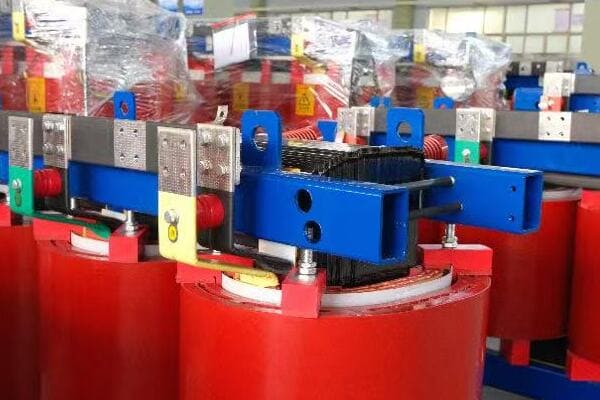
Understanding Transformer Cooling Methods
Let’s explore the three main cooling methods:
- Air Natural (AN) Cooling
- Air Forced (AF) Cooling
- Oil-Immersed Cooling
- Selecting the Right Method
Air Natural (AN) Cooling
AN cooling relies on natural air circulation:
- Suitable for smaller transformers (typically up to 3 MVA)
- Ideal for indoor installations with good ventilation
- Low maintenance and noise levels
I once worked on a commercial building project where AN cooling was perfect for the basement transformer room. Its quiet operation and minimal maintenance needs were ideal for the space.
Air Forced (AF) Cooling
AF cooling uses fans to enhance air circulation:
- Suitable for larger dry-type transformers
- Allows for higher capacity in a compact size
- Requires regular maintenance of fans and filters
During an industrial facility upgrade, we opted for AF cooling for a 5 MVA transformer. The forced air allowed for a more compact installation in the limited space available.
Oil-Immersed Cooling
Oil-immersed cooling uses insulating oil for heat dissipation:
- Ideal for high-capacity transformers (typically above 5 MVA)
- Excellent for outdoor installations and harsh environments
- Provides superior insulation and cooling efficiency
I recall a utility-scale project where oil-immersed cooling was crucial. The transformer’s high capacity and outdoor location made oil cooling the most effective and reliable choice.
Selecting the Right Method
Consider these factors when choosing a cooling method:
- Transformer capacity and size
- Installation environment (indoor/outdoor, temperature extremes)
- Maintenance capabilities and requirements
- Fire safety considerations
- Noise limitations
- Future load growth potential
Here’s a comparison table of cooling methods:
| Cooling Method | Typical Capacity | Best For | Maintenance Needs |
|---|---|---|---|
| Air Natural (AN) | Up to 3 MVA | Indoor, quiet areas | Low |
| Air Forced (AF) | 3-10 MVA | Space-constrained areas | Moderate |
| Oil-Immersed | 5 MVA and above | Outdoor, harsh environments | High (but infrequent) |
Key considerations for choosing the right cooling method:
- Match the cooling method to your calculated kVA rating
- Consider the installation environment and space constraints
- Evaluate long-term maintenance requirements and costs
- Assess fire safety regulations, especially for indoor installations
- Factor in noise limitations, particularly in urban or sensitive areas
In my experience, the choice of cooling method can significantly impact a transformer’s performance and lifespan. I’ve seen projects where an inappropriate cooling choice led to premature transformer failure, while the right choice ensured years of reliable operation.
For instance, in a data center project, we initially considered oil-immersed cooling for its efficiency. However, after evaluating fire safety concerns and the indoor installation requirements, we opted for a high-capacity AF-cooled transformer. This decision balanced cooling efficiency with the stringent safety needs of the data center environment.
Remember, the cooling method you choose isn’t just about meeting current needs; it’s about ensuring your transformer operates efficiently and reliably throughout its lifespan. By carefully considering all factors and aligning them with your specific project requirements, you can select a cooling method that optimizes performance, safety, and long-term cost-effectiveness.
As we move forward to discuss typical use cases by industry, keep in mind how these cooling methods align with different applications and environments. This understanding will help you make more informed decisions in your transformer selection process.
Comparison Table: Typical Use Cases by Industry?
Are you wondering how different industries typically approach transformer selection? Understanding common practices across various sectors can provide valuable insights for your own project. But how do transformer specifications typically vary across industrial, commercial, and utility applications?
Different industries have distinct transformer needs based on their power requirements, environmental conditions, and operational demands. Industrial settings often require high-capacity, oil-cooled transformers for heavy loads. Commercial applications typically use dry-type transformers for safety and maintenance ease. Utilities often employ large, oil-immersed transformers for grid-level distribution. Understanding these patterns helps in making informed decisions for specific projects.
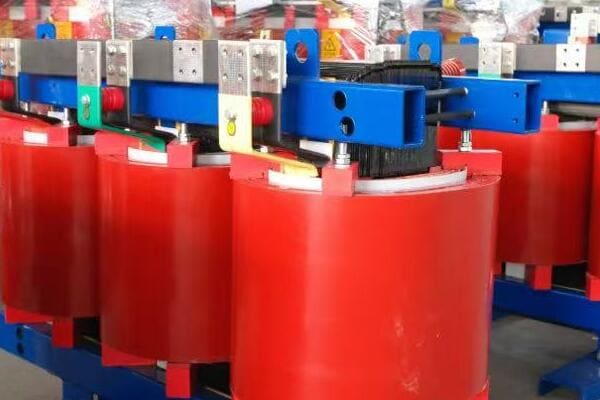
Industry-Specific Transformer Use Cases
Let’s explore typical transformer configurations across different sectors:
- Industrial Applications
- Commercial and Institutional Settings
- Utility and Power Distribution
- Specialized Industries
Industrial Applications
Industrial settings often have unique power needs:
- High capacity requirements for heavy machinery
- Need for reliability in continuous operation
- Often prefer oil-cooled transformers for efficiency
During a steel mill project, we implemented a 10 MVA oil-cooled transformer to handle the enormous power demands of electric arc furnaces. The transformer’s ability to manage high loads and withstand harsh conditions was crucial.
Commercial and Institutional Settings
Commercial buildings have different priorities:
- Focus on safety and low maintenance
- Often use dry-type transformers for indoor installations
- Emphasis on energy efficiency and quiet operation
In a recent hospital renovation, we chose AF-cooled dry-type transformers. Their fire-resistant properties and low noise levels were perfect for the sensitive healthcare environment.
Utility and Power Distribution
Utility-scale applications have specific requirements:
- Very high capacity for grid-level distribution
- Outdoor installation capabilities
- Often use large oil-immersed transformers
I worked on a substation upgrade where we installed a 50 MVA oil-immersed transformer. Its ability to handle high voltages and provide efficient power distribution was essential for the regional grid.
Specialized Industries
Some industries have unique transformer needs:
- Data Centers: Emphasis on reliability and efficiency
- Renewable Energy: Need for transformers that can handle variable loads
- Marine Applications: Compact, corrosion-resistant designs
Here’s a comparison table of typical transformer specifications by industry:
| Industry | Typical Capacity | Preferred Cooling | Common Features |
|---|---|---|---|
| Heavy Industrial | 5-20 MVA | Oil-immersed | High short-circuit strength |
| Commercial Buildings | 500 kVA – 2.5 MVA | Dry-type (AN/AF) | Low noise, fire-resistant |
| Utility Distribution | 10-100 MVA | Oil-immersed | On-load tap changers |
| Data Centers | 1-5 MVA | Dry-type (AF) | High efficiency, redundancy |
| Renewable Energy | Variable | Dry-type/Oil | Ability to handle fluctuating loads |
Key considerations for industry-specific transformer selection:
- Understand the unique power demands of your industry
- Consider environmental factors specific to your application
- Evaluate safety requirements, especially in commercial or public spaces
- Factor in long-term operational costs and efficiency
- Consider future expansion needs typical in your industry
In my experience, recognizing industry trends in transformer use can provide valuable guidance, but it’s crucial to assess each project individually. I recall a manufacturing facility project where, contrary to the usual practice of using oil-cooled transformers, we opted for a large dry-type unit due to specific fire safety regulations and the client’s maintenance preferences.
Remember, while industry norms can offer a starting point, the best transformer choice always depends on your specific project requirements. By understanding these typical use cases and combining them with your unique needs, you can make a more informed decision that aligns with both industry standards and your particular situation.
As we move on to discuss China’s top brands for 3 phase distribution transformers, keep these industry-specific considerations in mind. They’ll help you appreciate how different manufacturers might cater to various sector needs and how this aligns with your project requirements.
🇨🇳 China’s Top Brands for 3 Phase Distribution Transformers (2025)?
Are you considering Chinese manufacturers for your 3 phase distribution transformer needs? With China’s growing prominence in the global electrical equipment market, understanding the top brands and their specialties is crucial. But how do you navigate the diverse offerings from Chinese manufacturers to find the best fit for your project?
China’s leading 3 phase distribution transformer brands in 2025 include TBEA, ABB (China), Siemens (China), SUNTEN, and Huapeng. These manufacturers offer a range of options from high-efficiency industrial transformers to compact designs for urban applications. Chinese brands are known for competitive pricing, growing technological capabilities, and increasing focus on energy efficiency and smart features.
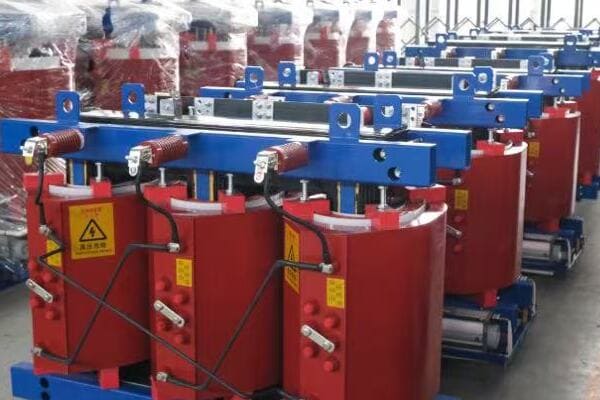
Analyzing China’s Top Transformer Brands
Let’s explore the strengths and specialties of these leading brands:
- TBEA
- ABB (China)
- Siemens (China)
- SUNTEN
- Huapeng
TBEA
TBEA is known for its comprehensive range of transformers:
- Specializes in high-capacity transformers for industrial and utility use
- Strong presence in Belt and Road Initiative projects
- Focus on energy-efficient designs
I recently worked on a large industrial park project where TBEA’s high-capacity oil-immersed transformers were selected for their reliability and efficiency in handling heavy industrial loads.
ABB (China)
ABB’s Chinese operations offer cutting-edge technology:
- Advanced dry-type transformers for urban applications
- Smart transformer solutions with digital monitoring capabilities
- Strong focus on energy efficiency and environmental sustainability
During a smart city project, we implemented ABB’s smart transformers. Their ability to provide real-time data and optimize power distribution was crucial for the project’s energy management goals.
Siemens (China)
Siemens brings German engineering expertise to the Chinese market:
- High-quality transformers for various applications
- Emphasis on reliability and long-term performance
- Growing focus on green and efficient transformer solutions
In a recent healthcare facility upgrade, Siemens’ low-noise, high-efficiency transformers were the perfect fit, meeting both the technical requirements and the stringent environmental standards of the hospital.
SUNTEN
SUNTEN specializes in compact and efficient designs:
- Known for space-saving transformer solutions
- Strong presence in commercial and light industrial applications
- Growing focus on renewable energy integration
For a urban redevelopment project with severe space constraints, SUNTEN’s compact dry-type transformers provided the perfect solution, offering high performance in a limited footprint.
Huapeng
Huapeng offers cost-effective solutions:
- Wide range of transformers for various applications
- Known for good value-for-money propositions
- Increasing focus on quality and international standards compliance
In a series of small to medium-sized industrial projects, Huapeng’s transformers offered a good balance of performance and affordability, making them an attractive choice for budget-conscious clients.
Here’s a comparison table of these top Chinese brands:
| Brand | Specialty | Best For | Notable Feature |
|---|---|---|---|
| TBEA | High-capacity industrial | Large-scale projects | Belt and Road expertise |
| ABB (China) | Smart transformers | Urban, data-driven applications | Digital integration |
| Siemens (China) | Reliable, efficient designs | Healthcare, sensitive environments | Low noise, high efficiency |
| SUNTEN | Compact designs | Space-constrained urban projects | Space-saving solutions |
| Huapeng | Cost-effective options | Small to medium industries | Value for money |
Key considerations when choosing Chinese transformer brands:
- Evaluate the brand’s expertise in your specific application area
- Consider their compliance with international standards (IEC, ANSI)
- Assess after-sales support and warranty terms, especially for international projects
- Look into their track record in energy efficiency and environmental sustainability
- Consider the brand’s experience in your geographical region or similar markets
In my experience, Chinese transformer manufacturers have made significant strides in quality and technology in recent years. However, it’s crucial to do thorough due diligence. I recall a project where we initially hesitated to use a Chinese brand due to concerns about quality. After a comprehensive review and factory visit, we were impressed by their advanced manufacturing processes and quality control, leading to a successful implementation.
Remember, while these Chinese brands offer competitive options, the best choice depends on your specific project requirements, budget constraints, and long-term operational needs. By carefully considering these factors and aligning them with the strengths of different manufacturers, you can make an informed decision that balances cost-effectiveness with performance and reliability.
As we conclude this guide, keep in mind that the transformer market is dynamic, with continuous advancements in technology and efficiency. Stay informed about the latest developments to ensure you’re always making the best choice for your projects.
Conclusion: Smart Selection Saves Cost and Boosts Reliability
Choosing the right 3 phase distribution transformer is crucial for project success. By carefully considering voltage requirements, accurately calculating load, selecting appropriate cooling methods, and understanding industry-specific needs, you can ensure optimal performance, efficiency, and reliability. Remember, smart selection not only saves costs but also enhances long-term operational reliability.
Remember, at chbeb-ele, we’re not just sharing information – we’re empowering you to be part of the solution in creating a secure, clean, and efficient energy future. Let’s continue this journey together.
Free CHBEB Transformer Catalog Download
Get the full range of CHBEB transformers in one catalog.
Includes oil-immersed, dry-type, pad-mounted, and custom solutions.
Quick Message
Request A free quote
We'd like to work with you
- +86 15558785111
- [email protected]
- +86 15558785111
What We Do
CHINA BEI ER BIAN (CHBEB) GROUP, with 218 million in registered capital, originated from Beijing Beierbian Transformer Group. Headquartered in Beijing for R&D, it operates major production bases in Nanjing and Yueqing, producing high-quality products.
Latest Product
address
BeiJing
No 3,RongJing East Road,BeiJing Economic Technological Development Area,BeiJing,China
JiangSu
No 7️Xiangfeng Road,Jiangning,NanJing,JiangSu,China
WenZhou
No.211, Wei 16 Road, Industrial Zone, Yueqing, Wenzhou, Zhejiang, China.
XiangYang Industrial Zone ,YueQing,WenZhou,ZheJiang,China
contact us
- [email protected]
- +86 13057780111
- +86 13057780111
- +86 15558785111
Copyright © Bei Er Bian Group


